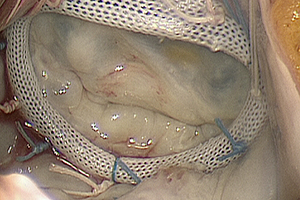Catheter-based or surgical repair of the highest risk secondary mitral regurgitation patients
Abstract
Surgical mitral valve repair (MVR) remains the standard of care for patients with severe valve incompetence with clear, proven benefit for patients with primary mitral regurgitation (MR). Secondary MR is a primary disease of the left ventricular (LV) myocardium. Up to 50% of patients develop secondary MR after an acute myocardial infarction (ischemic MR), with approximately 10% of these having severe MR. It is controversial as to whether surgical MVR is beneficial for these patients because valve repair or replacement does not correct the underlying disease. The increased perioperative risk due to decreased LV function makes clinical decision-making even more complex. The recently introduced less-invasive, catheter-based therapies are potential promising solutions for this dilemma. While the MitraClip device is already in widespread clinical use as a viable therapeutic option in higher-risk patients with primary MR and currently in investigational trials for secondary MR, several other devices for both repair and replacement are currently undergoing feasibility trials. Due to the complex structure of the mitral valve, the development of transcatheter mitral valve replacement has been much slower than that of transcatheter aortic valve replacement, but this approach may be an attractive therapeutic option in the future. Currently, the role of surgical therapy in comparison to transcatheter techniques in secondary MR is not well defined.
Cover






